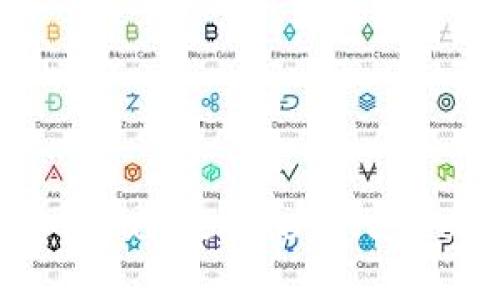近年来,加密货币作为一种新兴的资产类别,逐渐引起了全球投资者的关注,特别是在经济动荡和传统投资方式出现...
As the world of finance continues to evolve rapidly, the emergence of cryptocurrencies has brought about a unique lexicon that can often bewilder newcomers and seasoned investors alike. Abbreviations and acronyms play a pivotal role in the crypto community, encapsulating complex concepts, projects, and technological innovations into digestible terms. In this article, we will delve deeply into the latest news surrounding cryptocurrencies, focusing particularly on commonly used abbreviations that are essential for understanding this dynamic industry.
In any field, specialized language can create barriers for those unfamiliar with the terminology. The world of cryptocurrencies is no different; terms like ICO (Initial Coin Offering), FOMO (Fear of Missing Out), and HODL (Hold On for Dear Life) are frequently used within the community. Understanding these abbreviations is crucial for engaging with industry news, participating in discussions, and making informed investment decisions.
Moreover, abbreviations often reflect broader trends and ideologies prevalent within the cryptocurrency space. For example, the term 'DeFi' (Decentralized Finance) represents a movement toward creating open, permissionless financial systems that operate independently from traditional banking infrastructures. Recognizing such terms can provide insights into market sentiments and emerging technologies.

As the cryptocurrency landscape evolves, new abbreviations continue to emerge. For instance, 'NFT' (Non-Fungible Token) has become a buzzword in recent years, reflecting the growing interest in digital assets tied to ownership and provenance. Meanwhile, the term 'DAOs' (Decentralized Autonomous Organizations) has gained traction as communities explore decentralized governance models.
Understanding these trends is essential for anyone looking to stay informed. Platforms like Twitter, where cryptocurrency enthusiasts frequently share updates, can become overwhelming without knowledge of the abbreviations being used. Thus, familiarizing oneself with the latest jargon is a fundamental step in becoming an informed participant in this rapidly changing field.
NFTs have revolutionized the way we approach ownership in the digital realm. Unlike traditional cryptocurrencies such as Bitcoin and Ethereum, which are fungible and can be exchanged for one another, NFTs are unique digital assets representing ownership of a specific item or piece of content—be it digital art, music, or even virtual real estate.
The rise of NFTs has been spectacular, highlighted by record-breaking sales that have captured mainstream media attention. Artists and creators now have the opportunity to monetize their work in ways that were previously unimaginable, fostering a new economy in the digital space.
DeFi stands at the forefront of the cryptocurrency revolution, disrupting traditional financial systems by leveraging blockchain technology. DeFi applications enable users to engage in various financial activities such as lending, borrowing, and trading without intermediaries like banks. This promotes transparency, reduces costs, and increases accessibility.
One key aspect of DeFi is its composability, where different applications can interact with each other, creating new financial products and services. For example, users can provide liquidity to a decentralized exchange and simultaneously earn interest on their deposits. The DeFi ecosystem is rapidly evolving, fostering a new wave of innovation in financial services.
ICOs played a pivotal role in the early days of cryptocurrency fundraising, allowing projects to raise capital by issuing their tokens to the public. While ICOs have faced regulatory scrutiny and criticisms regarding scams and lack of transparency, they paved the way for new fundraising models such as IDOs (Initial DEX Offerings) and IEOs (Initial Exchange Offerings).
Understanding the mechanics behind ICOs is essential for investors looking to participate in new projects launched within the cryptocurrency space. Researching the project's whitepaper, team, and community engagement is crucial for assessing the viability of an ICO.
A misspelling of “hold,” HODL has become a rallying cry within the cryptocurrency community for those who believe in long-term investment strategies. The term originated from a 2013 post on a Bitcoin forum where a user, after a market crash, advised others to hold onto their coins instead of panicking and selling.
This notion of HODLing has become a cultural phenomenon, emphasizing patience and the long-term vision that many investors adopt in the volatile world of cryptocurrencies. It embodies the belief that despite short-term fluctuations, the value of cryptocurrencies will increase over time as adoption grows.
FOMO is often a driver of market emotion in the crypto world, reflecting the anxiety investors feel about potentially missing lucrative opportunities. As prices soar and media coverage increases, more people are drawn into the market, often leading to frantic buying activity and inflated asset prices.
Understanding FOMO is essential, as it can lead to irrational decision-making. Savvy investors recognize the importance of conducting thorough research and sticking to their investment strategies instead of succumbing to impulsive decisions driven by FOMO.

The cryptocurrency market is heavily influenced by trends, and understanding abbreviations can provide critical insights into these movements. When a new term or abbreviation gains traction, it often signifies emerging technologies or shifts in investor sentiment. For instance, the surge in the popularity of NFTs and DeFi in recent years has reshaped various sectors within the crypto ecosystem, leading to significant capital inflows and innovations.
Moreover, traders and investors often use abbreviations in their analyses, facilitating faster communication and decision-making. This speed can contribute to volatility, as trends can quickly gain momentum or dissipate based on social media engagement or community discussions. Understanding the implications behind different abbreviations can empower investors to navigate these trends more effectively.
While abbreviations simplify communication, they may also obscure the complexities inherent in the world of cryptocurrencies. Relying solely on acronyms without understanding their underlying concepts can lead to poor decision-making. For example, investors drawn in by the hype surrounding ICOs without fully grasping the project’s fundamentals may risk losing their investments.
Furthermore, the fast-paced nature of the crypto space can sometimes result in misinformation or misinterpretation of abbreviations. Newcomers may find themselves overwhelmed by the amount of jargon, potentially leading to a lack of confidence in their investment choices. It's paramount that both new and seasoned investors take the time to educate themselves thoroughly on the terminology used in the industry and evaluate projects critically rather than following trends blindly.
As the cryptocurrency landscape continues to innovate, regularly updating one’s knowledge base is crucial. Investors can utilize various resources to stay informed, such as dedicated forums, cryptocurrency news websites, and educational platforms. Following influential figures on social media who frequently discuss market trends and emerging abbreviations can also be beneficial.
Additionally, engaging in community discussions—whether on Reddit, Twitter, or other platforms—can expose investors to the latest acronyms in use, along with their context and significance. Subscribing to newsletters or podcasts focused on cryptocurrency can provide concise updates and insights, streamlining the learning process.
Indeed, numerous tools and websites exist to assist investors in navigating the complex world of cryptocurrency abbreviations. Cryptocurrency dictionaries and glossaries are invaluable resources, providing concise definitions for commonly used acronyms and terms. Websites like CoinMarketCap and CryptoCompare often include explanations of different abbreviations alongside their market data.
Additionally, browser extensions and mobile applications dedicated to cryptocurrency tracking might offer educational features that highlight important abbreviations. Engaging with these tools can enhance understanding and allow investors to feel more confident in their market interactions.
Comprehending cryptocurrency abbreviations allows investors to access and interpret market information more effectively, leading to more informed decision-making. A solid grasp of the terminology used to describe various projects, technologies, and market phenomena enables investors to conduct thorough research and analyses.
By understanding the significance of terms like DeFi or NFTs, investors can better assess potential opportunities or risks. Additionally, being knowledgeable about market sentiment indicators—such as FOMO or HODL—can help investors navigate their emotions and make strategic choices aligned with their financial goals.
Ultimately, knowledge is power in the world of cryptocurrency. By taking the time to familiarize oneself with the latest abbreviations and their meanings, investors can position themselves to capitalize on emerging trends and technologies while managing their portfolio with greater confidence.